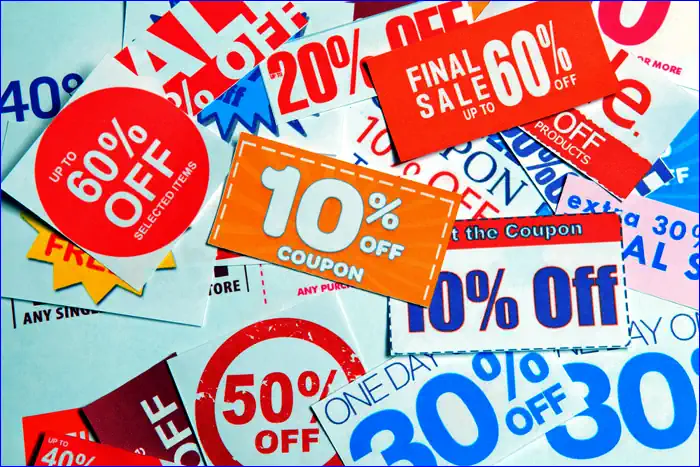Discounts play a pivotal role in e-commerce marketing, offering a powerful tool for attracting customers, boosting sales, and fostering loyalty.

Among the various types of discounts, percentage-based discounts stand out as a popular choice for online retailers. Let’s explore the psychology and strategy of using percentage-based discounts, examining how they can be effectively implemented in e-commerce marketing campaigns.
What are Percentage-based Discounts
Percentage-based discounts, as the name suggests, offer customers a certain percentage off the total purchase price. For example, a coupon code might provide a 20% discount on a customer’s order. This straightforward discount mechanism is widely employed by e-commerce businesses due to its simplicity and effectiveness.
The Psychology of Percentage-based Discounts
Percentage-based discounts leverage several psychological principles to influence consumer behavior.
Perceived Value
One key factor is perceived value – customers perceive a higher value in receiving a percentage discount compared to a fixed monetary discount.
For example, a 50% off coupon on a $100 item seems more enticing than a $50 discount, even though they have the same monetary value. This perception of getting more for their money can motivate consumers to make a purchase.
Loss Aversion
Percentage-based discounts tap into the concept of loss aversion, where customers are motivated to avoid missing out on a perceived opportunity for savings.
People are more motivated to avoid losses than to acquire gains, according to prospect theory. Offering a percentage discount triggers a fear of missing out on savings, leading consumers to act quickly to avoid the perceived loss of not getting the deal.
Anchoring Effect
When presented with a percentage discount, consumers often anchor their perception of the product’s value to the original price. Even if the actual price reduction is small, the presence of a percentage discount can make the final price seem like a better deal.
Imagine a pair of sneakers originally priced at $50. The store offers a 10% discount, reducing the price by $5 to $45. Despite the relatively small price difference, consumers may perceive this as a significant saving due to the presence of a “10% off” promotion, anchoring their perception of the deal’s value to the original $50 price. Consequently, they might be more inclined to purchase the sneakers, believing they are getting a better deal than they actually are.
Simplicity and Transparency
Percentage discounts are straightforward and easy to understand, which enhances transparency for consumers. This simplicity reduces cognitive effort, making it easier for consumers to evaluate the deal and make a purchase decision.
Imagine you’re shopping online for a new pair of headphones that are originally priced at $50. As you’re browsing, you notice that the store is offering a 20% off sale on all headphones. This straightforward percentage discount makes it easy for you to quickly calculate the savings: 20% of $50 is $10, so the headphones will now cost you $40. This clear and simple discount format reduces the mental effort needed to understand how good the deal is, making it more likely that you’ll decide it’s a good value and proceed to make a purchase.
Comparative Evaluation
Percentage discounts facilitate comparison shopping by allowing consumers to easily compare the savings across different products or retailers. Consumers tend to prefer products that offer the highest percentage discount relative to the original price.

A shopper is deciding between two jackets on sale at different stores. Jacket A, originally priced at $100, is offered with a 20% discount, while Jacket B, with an original price of $200, has a 30% discount. By calculating the savings, the shopper finds that Jacket A would cost $80 after the discount, saving them $20, and Jacket B would cost $140, saving them $60. This comparison makes it easier for the shopper to see that Jacket B offers a higher percentage discount and greater overall savings, making it the more attractive option despite its higher initial price.
Psychological Pricing
Pricing strategies often leverage the perception of percentage discounts to create a sense of affordability and value. For example, setting prices just below a round number (e.g., $19.99 instead of $20) can make the discount seem more significant when applied as a percentage.
Overall, percentage-based coupon discounts leverage psychological principles to influence consumer perceptions and behaviors, making them a powerful tool in marketing and sales strategies.
Benefits of Percentage-based Discounts
Percentage-based discounts offer numerous benefits to both businesses and customers. For businesses, these discounts can drive sales by incentivizing purchases and increasing conversion rates. They also help attract new customers and encourage repeat purchases, ultimately contributing to revenue growth.
Customers, on the other hand, appreciate the transparency and flexibility of percentage-based discounts, as they provide tangible savings proportional to their order value.
Strategies for Implementing Percentage-based Discounts
Implementing percentage-based discounts requires careful planning and strategy. Businesses should consider factors such as product margins, customer demographics, and competitive landscape when determining the optimal discount percentage. It’s also essential to identify the most effective channels and timing for promoting discount offers to maximize their impact.
Best Practices for Percentage-based Discount Campaigns
To ensure the success of percentage-based discount campaigns, businesses should adhere to several best practices. This includes designing compelling and visually appealing promotional materials, clearly communicating the terms and conditions of the discount offer, and creating a sense of urgency to prompt immediate action from customers. A/B testing can also help refine discount offers and identify the most effective messaging and creative elements.
Measurement and Analysis
Measuring the performance of percentage-based discount campaigns is crucial for evaluating their effectiveness and informing future marketing decisions. Businesses should track key metrics such as conversion rate, average order value, and return on investment to assess the impact of discount offers. By analyzing this data, businesses can identify trends, optimize their discount strategies, and continually improve their marketing efforts.

Conclusion
Percentage-based discounts are a versatile and effective tool for e-commerce marketers, offering a straightforward yet powerful way to attract customers and drive sales. By understanding the psychology behind these discounts and implementing strategic campaigns, businesses can leverage percentage-based discounts to achieve their marketing goals and stay ahead in today’s competitive e-commerce landscape.


